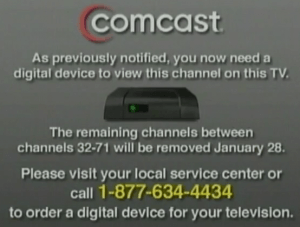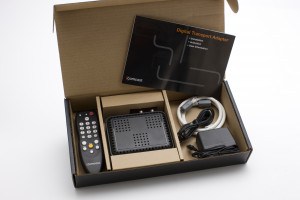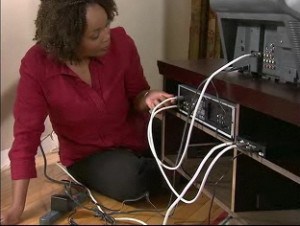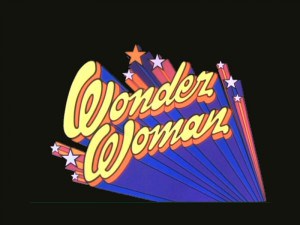 City by city, Comcast is continuing its quest to make the switch to digital cable for an increasing portion of its cable programming lineup. Although the majority of subscribers will encounter letters from Comcast switching only a portion of the analog cable lineup, it’s a safe bet Comcast is looking to an all-digital future sooner or later.
City by city, Comcast is continuing its quest to make the switch to digital cable for an increasing portion of its cable programming lineup. Although the majority of subscribers will encounter letters from Comcast switching only a portion of the analog cable lineup, it’s a safe bet Comcast is looking to an all-digital future sooner or later.
Coming less than a year after the switch to digital broadcast television, the march to digital cable is causing confusion for subscribers who don’t understand the difference.
Analog cable television has been around for more than 20 years in most American cities. It’s the kind of cable television that doesn’t usually need a converter box on top of the TV. Just plug the cable line into the back of your television set, let the TV find and map available channels, and you can use your standard TV remote to enjoy basic or enhanced basic cable television. Of course, if you subscribe to premium channels like HBO or Showtime, a box is required to descramble the encrypted signal.
Cable operators began launching “digital cable” in the 1990s, expanding the lineup of programming with hundreds of new channels that are compressed into a digital format, with a half dozen or more digital channels fitting in the same space used by just one analog channel. Space on the cable line is getting increasingly crowded as cable systems launch new HD channels, support telephone service, and expand broadband service and speeds.
To make room, several of those old school analog channels have to go… digital. If you already have a set top cable box — you probably won’t even notice the changeover. But if you don’t have one of those boxes in your home, and your television doesn’t support CableCARD technology, Comcast has some bad news for you. Sooner or later, you’ll either have to get a set top box or lose an increasing number of channels on your cable dial.

Comcast's digital adapter doesn't support HD channels
Comcast’s digital cable expansion is their solution to the traffic jam on their cable lines. Some other cable companies take a different approach. Knowing that many customers hate cable boxes, they’ve left analog channels alone, instead transmitting digital channels only to those homes actually watching them. If nobody in your neighborhood is watching Current or Fox Business News, why waste the space to send those signals down the line to… nobody. Time Warner Cable doesn’t for many of their digital channels. If one lives in an eclectic viewing neighborhood, there are problems with this approach. Potentially, if enough homes want to watch these lesser-viewed networks, and Time Warner runs out of the space it sets aside to carry a certain number of these channels, the subscriber will see a video busy signal — a message stating the channel is temporarily not available, at least until someone nearby changes channels, making room for the network you want to watch.

Comcast's digital solution is a problem for those who hate "the box" for weaving a rat's nest of cables behind one's television.
In most communities, Comcast will provide up to three digital adapter boxes at no charge, if you install them yourself on each television in your home. Additional boxes are usually $1.99 per month. That’s fine if you are still using an older television set and don’t care about HDTV programming — the digital adapters Comcast provides don’t support HD. If you do want HD channels, you’ll need Comcast’s traditional converter box, which runs about $7 a month per television, or a CableCARD, if your television supports it. Comcast also has elaborate instructions for customers with multiple TV inputs to support both standard and high definition signals, some through the digital adapter, others not, but it requires a lot of cables.
Customers who loathe boxes and don’t want to pay for them are upset by all of the changes, and either must cope with the new box, or gradually lose more and more analog channels as the conversion continues. Broadcast basic customers getting only local channels from Comcast are unaffected by all of this, at least for now. Owners of modern HD television sets aren’t impressed either — their sets, capable of receiving QAM digital cable channels without a box are no help because Comcast encrypts its digital cable lineup in many areas.
But the company still thinks of the project as a service upgrade for its customers, even dubbing it Project Cavalry on their company blog. When one customer wondered why the new equipment wasn’t available in his area yet, a company blogger responded, “We will not be “cherry picking” … all our systems will get the benefits. The Comcast Cavalry just hasn’t swept through your area yet, stay tuned.”
When asked why the devices don’t support HD channels, the response:
The DTA was designed as a low-end, basic device to do one thing and one thing only … convert digital signals back to analog for display on an analog TV. That’s all, no higher end outputs, no VOD, no HD, no interactive guide. Keeping the device simple as described is what kept the price down enough that we can provide so much free equipment to our customers. Also, the RF output makes it compatible with the absolute maximum number of TVs, which is critical to the program. As a digital device, however, it does offer dramatically-improved picture quality over analog even through the RF output.
[flv]http://www.phillipdampier.com/video/Comcast DTA Tutorial.flv[/flv]
Watch Comcast’s tutorial on installing their Digital Adapter. (4 minutes)
[flv width=”640″ height=”500″]http://www.phillipdampier.com/video/Comcast Digital Migration.flv[/flv]
Watch a coast-to-coast series of news reports detailing the Comcast transition to digital, starting with the message customers see on their now-missing favorite channels. (15 minutes)



 Subscribe
Subscribe


